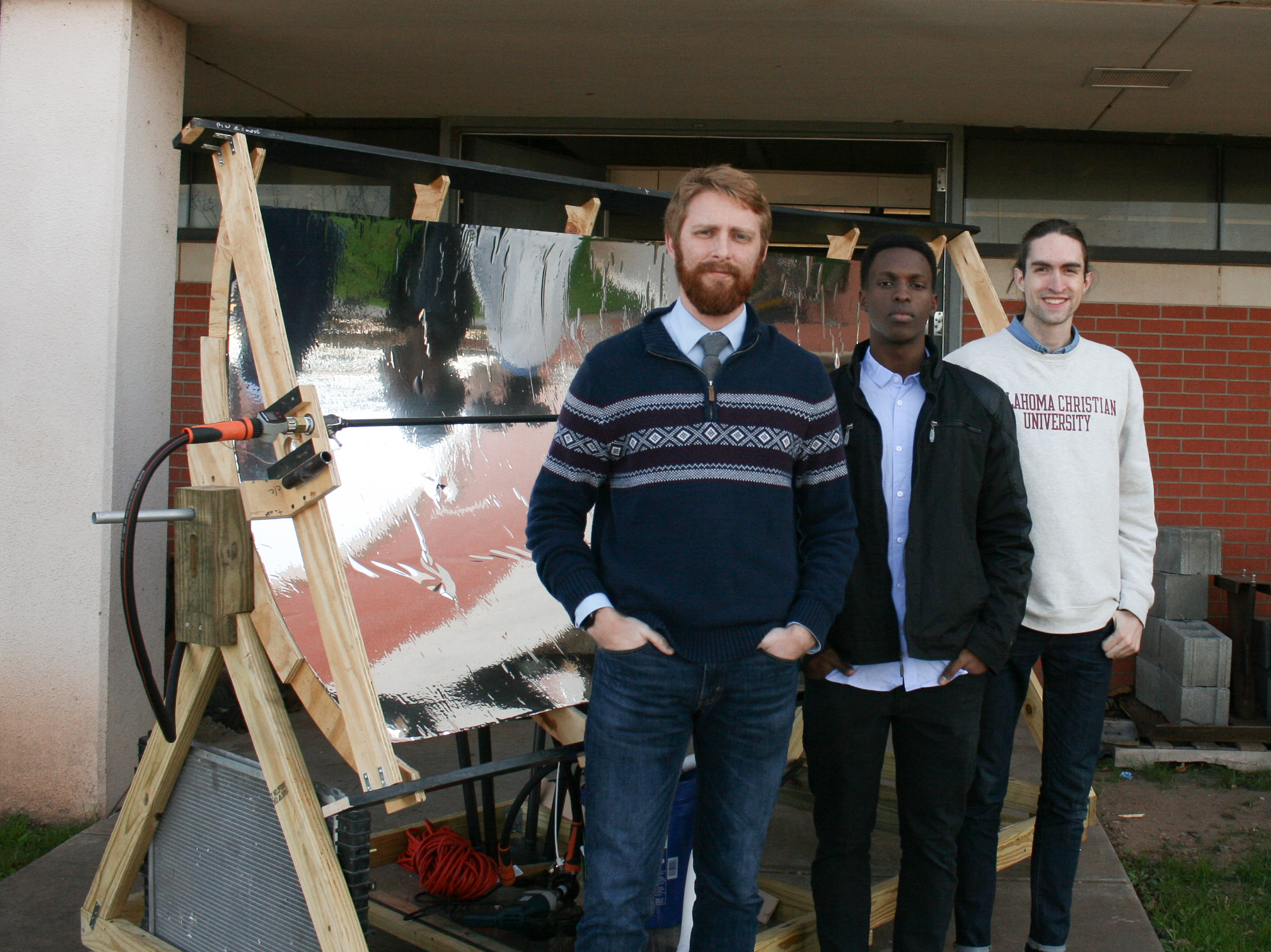A team of three Oklahoma Christian University mechanical engineering students is working to craft a consistent source of renewable energy out of basic, inexpensive components.
Seniors Dylan Gates, Matt Curran and Adrian Ndaruzi have partnered with Oklahoma Gas and Electric (OG&E) to create a concentrating solar power collector concept, also known as a parabolic trough. Using materials commonly found at hardware stores—including wood, copper and Mylar film—the group plans to have their system turning raw sunlight into usable electricity by the end of this semester.
The concept, which would be interfaced directly with OG&E’s current coal fire burning system, could soon be used by the company to decrease fossil fuel burning and drive down consumer electricity costs during high-usage summer months. According to data collected by FiveThirtyEight, the demand for power in the U.S. rose 25 percent between April and July 2015.
“They would like to implement a large installational plant of these types of solar collectors into their current energy production to help with the summer A/C,” Gates said. “In the midday of summer, everyone goes home, turns on their air conditioning, and it’s just this huge power drain. They want a system like this to help with that, because it’s free, renewable energy.”
Using strategically placed Mylar film, the concept reflects sunlight onto a metal pipe filled with fluid. As the sunlight heats the pipe and fluid up, other components of the collector are ignited, generating electricity.
“This is different from what you would usually see on a solar panel,” Curran said. “A solar panel is just black, it’s flat, it absorbs sunlight and uses silicon to generate electricity. This uses just focused light. So, when you get outside with a magnifying glass burning ants, it’s kind of the same concept.”
The group will be evaluated on their concept design, as well as how efficiently the collector generates electricity. Because they are utilizing basic materials and constructing their design by hand, expectations are the efficiency will be around half of what is seen among the best industrial parabolic troughs.
“In an industrious setting, you’re going to have much better manufacturing processes, better materials, and even in those situations, you’re seeing an efficiency of around 50 percent,” Gates said. “So, 20 to 30 percent efficiency for us, that would be impressive.”
Unlike established mechanical engineering systems projects like Aero Design, this is the first year a group of Oklahoma Christian students are working with solar energy. According to Gates and Curran, much of the team’s work this year has been experimental in nature, and a major goal of the project is just to prove the technology itself is reliable and practical to implement into existing power systems.
“There’s only one manufacturer of these things in the United States,” Curran said. “You can’t buy these on a small scale—you can’t even get the parts on a small scale. So, we’re working on something we’d like to improve here, but we have to order some of the parts from China.”
While solar technology has yet to surpass burning fossil fuels as a reliable, primary source of electricity, the technology is improving and becoming more efficient every day, according to Gates.
“The technology is still very expensive, but it’s getting cheaper,” Gates said. “The incentives also vary by state. This technology is decent in Oklahoma, but it’s better in Arizona and worse in Massachusetts. It really depends upon location.”












Be First to Comment